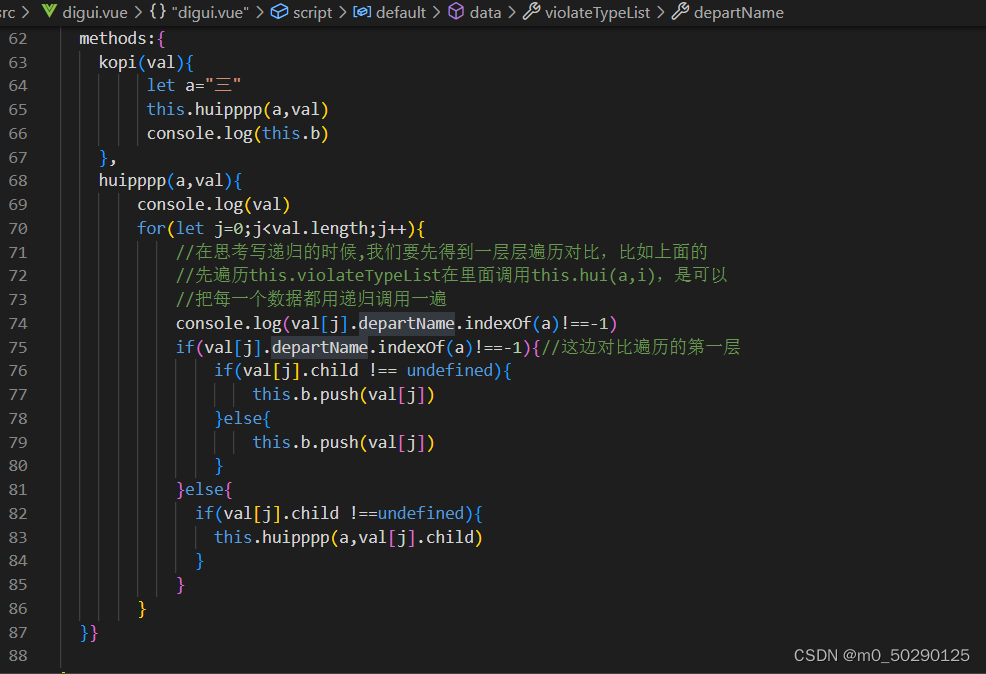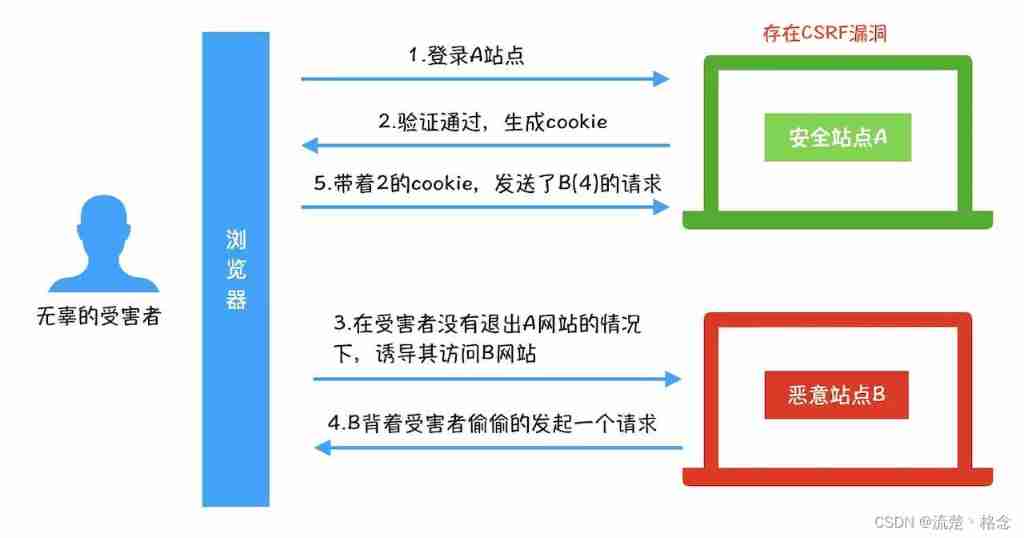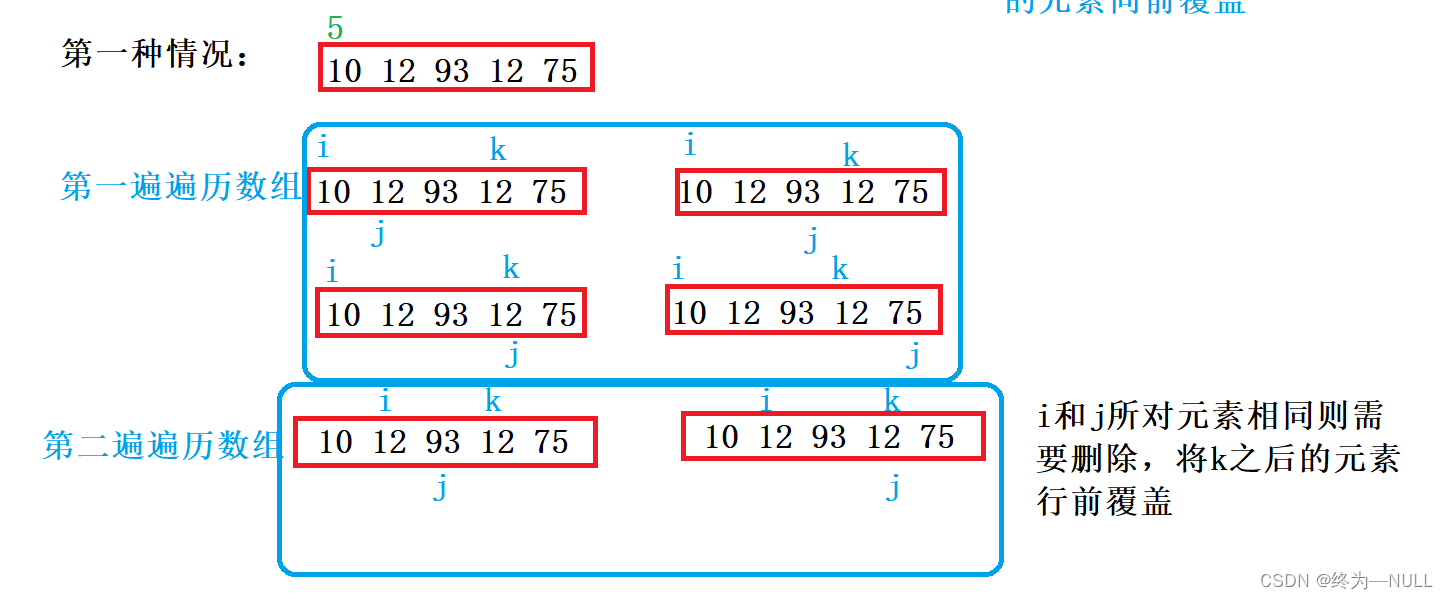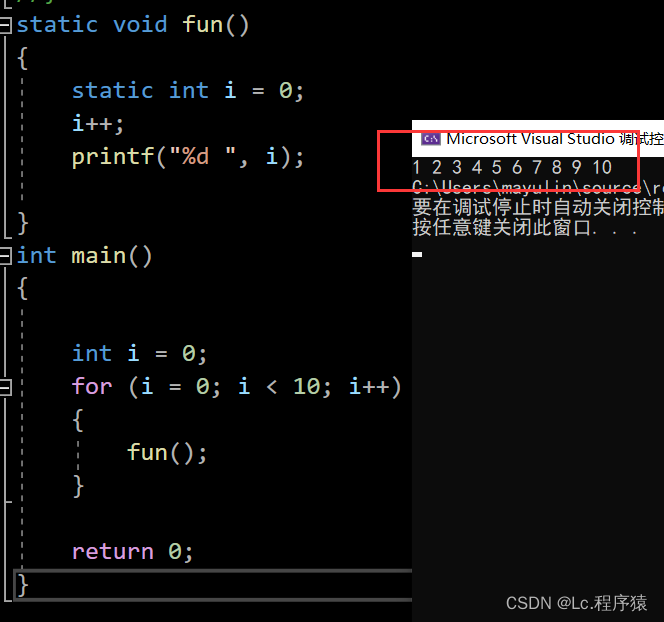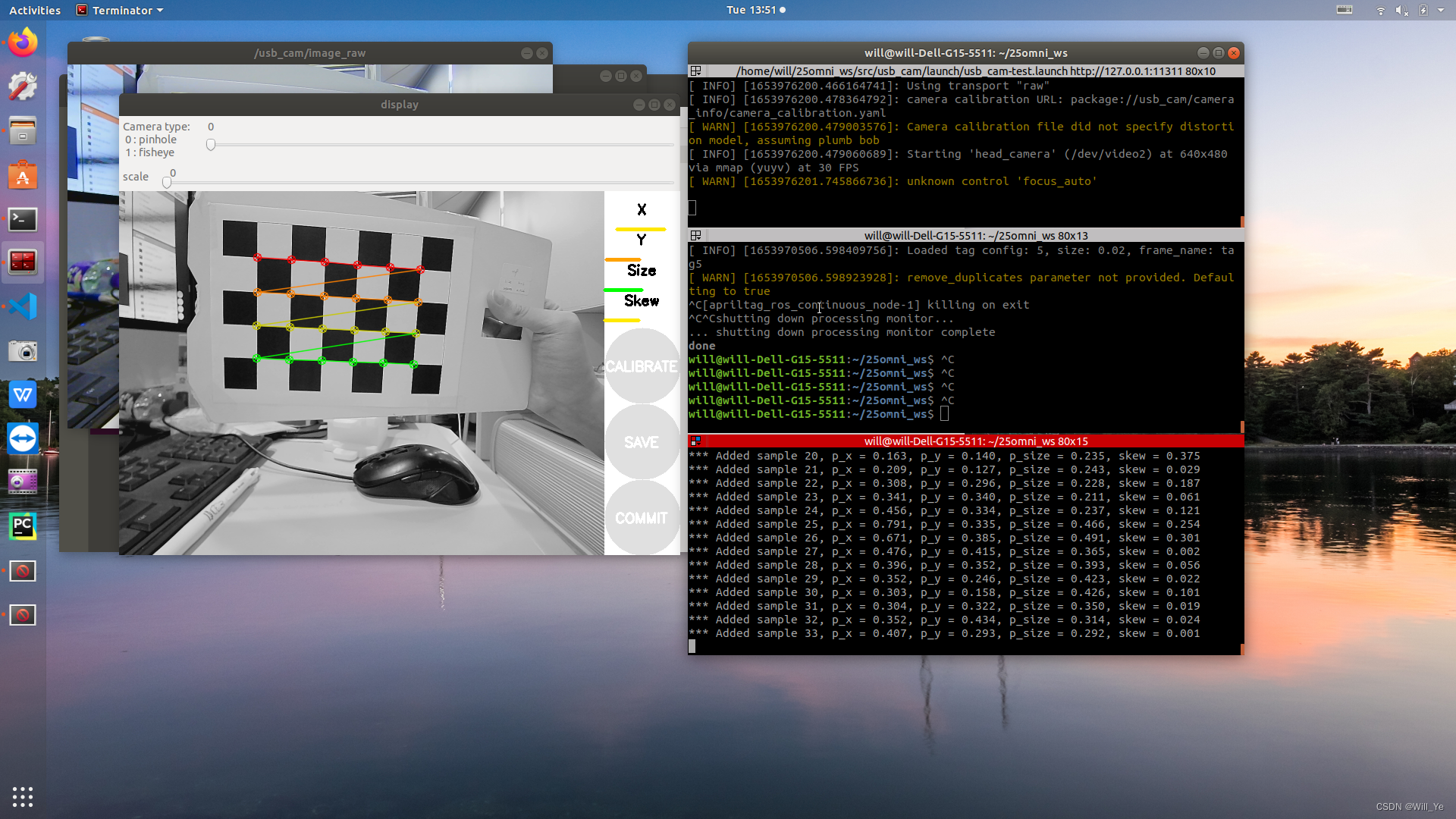当前位置:网站首页>【剑指offer】序列化二叉树
【剑指offer】序列化二叉树
2022-07-06 08:46:00 【保住头发的破风小子】
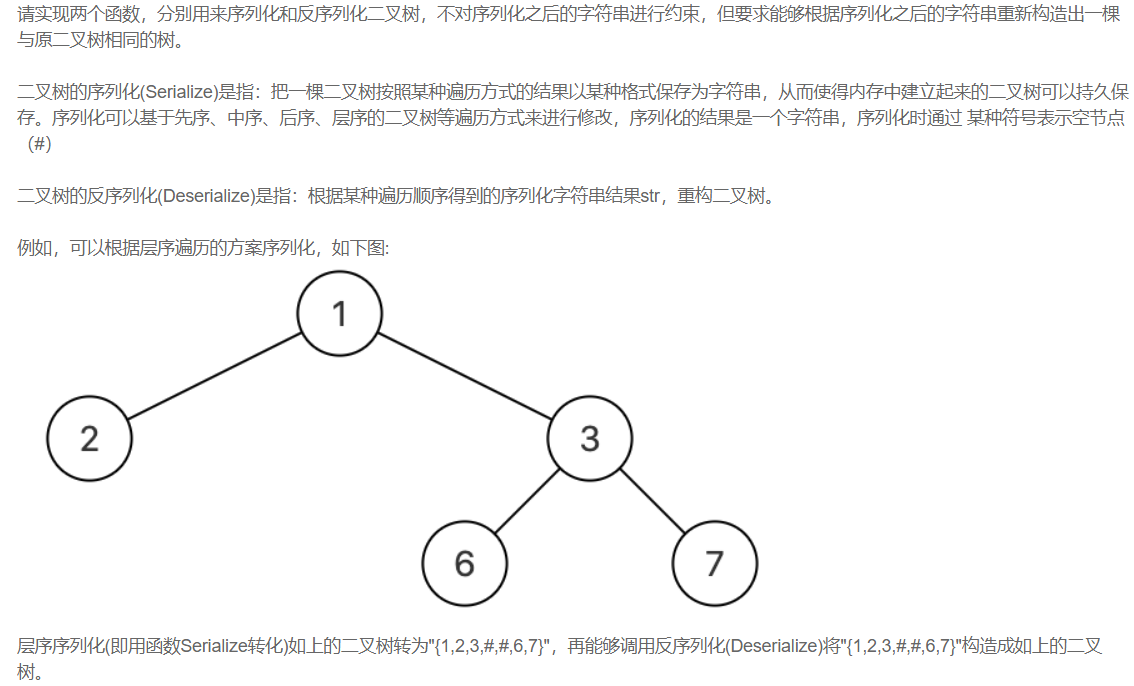
解题思路
序列化时,可以通过各种遍历方法,例如层序遍历、递归遍历对二叉树进行遍历,遍历过程中将每个节点的值拼接到字符串中,注意每个节点之间用一个标识符隔开,例如,,这是为了防止节点的值超过个位数。
反序列化则根据序列化的过程进行相应的解码,不同的反序列化方式有不同的技巧,下面分别使用层序遍历和先序遍历两种方法进行求解。
解法一:层序遍历
- 序列化:通过队列进行遍历,然后生成序列化的字符串,比较常规。
- 反序列化:稍微有点难度。首先对
res按照,进行切分得到String数组strs,每个位置表示一个节点的值。和序列化一样,也需要使用一个队列进行操作,注意每次需要取数组strs中的两个元素,即构建当前节点的左右子树,然后分别把左右子树加入队列中。
import java.util.*;
public class Solution {
String Serialize(TreeNode root) {
String str = "";
if (root == null)
return str;
Queue<TreeNode> queue = new LinkedList<>();
queue.add(root);
str += root.val + ",";
while (!queue.isEmpty()) {
TreeNode top = queue.poll();
if (top.left == null)
str += "#";
else {
queue.add(top.left);
str += top.left.val;
}
str += ',';
if (top.right == null)
str += "#";
else {
queue.add(top.right);
str += top.right.val;
}
str += ',';
}
return str;
}
TreeNode Deserialize(String str) {
if (str.length() == 0)
return null;
int i = 1;
String strList[] = str.split(",");
TreeNode root = new TreeNode(Integer.parseInt(strList[0]));
Queue<TreeNode> queue = new LinkedList<>();
queue.add(root);
while (!queue.isEmpty()) {
TreeNode top = queue.poll();
// 左子树
if (strList[i].equals("#"))
top.left = null;
else {
top.left = new TreeNode(Integer.parseInt(strList[i]));
queue.add(top.left);
}
i++;
// 右子树
if (strList[i].equals("#"))
top.right = null;
else {
top.right = new TreeNode(Integer.parseInt(strList[i]));
queue.add(top.right);
}
i++;
}
return root;
}
}
解法二:先序遍历
- 序列化:定义全局字符串
res,递归的时候记录遍历到的节点值,遍历完一个节点后,在其后加,标识符。 - 反序列化:稍微有点难度。首先对
res按照,进行切分得到String数组strs,每个位置表示一个节点的值。定义全局变量ind,用来记录当前遍历到strs的位置,如果当前位置是#,表示为空,直接返回null;否则新建一个节点node,并递归构建其左右子树,注意,在递归前判断数组是否越界,如果inds++后等于strs的长度,则表明已经遍历完数组,此时返回node(注意数组越界的判断不能放在开头,否则会写不下去,因为不知道返回什么了)
import java.util.*;
public class Solution {
public String res = "";
public int ind = 0;
String Serialize(TreeNode root) {
if (root == null) {
res += "#,";
return res;
}
res += root.val + ",";
Serialize(root.left);
Serialize(root.right);
return res;
}
TreeNode deserialize(String[] strs) {
if (strs[ind].equals("#")) {
ind++;
return null;
}
TreeNode node = new TreeNode(Integer.parseInt(strs[ind]));
ind++;
if (ind >= strs.length)
return node;
node.left = deserialize(strs);
node.right = deserialize(strs);
return node;
}
TreeNode Deserialize(String str) {
String[] strs = str.split(",");
return deserialize(strs);
}
}
边栏推荐
- China Light conveyor belt in-depth research and investment strategy report (2022 Edition)
- ROS compilation calls the third-party dynamic library (xxx.so)
- JS inheritance method
- Niuke winter vacation training 6 maze 2
- Revit secondary development Hof method calls transaction
- 企微服务商平台收费接口对接教程
- torch建立的网络模型使用torchviz显示
- C language double pointer -- classic question type
- [embedded] cortex m4f DSP Library
- egg. JS getting started navigation: installation, use and learning
猜你喜欢
随机推荐
JS native implementation shuttle box
Light of domestic games destroyed by cracking
Deep analysis of C language data storage in memory
广州推进儿童友好城市建设,将探索学校周边200米设安全区域
pytorch训练好的模型在加载和保存过程中的问题
Image,cv2读取图片的numpy数组的转换和尺寸resize变化
电脑F1-F12用途
vb. Net changes with the window, scales the size of the control and maintains its relative position
ESP8266-RTOS物联网开发
Sublime text in CONDA environment plt Show cannot pop up the problem of displaying pictures
Hutool gracefully parses URL links and obtains parameters
Problems in loading and saving pytorch trained models
Detailed explanation of heap sorting
Fairguard game reinforcement: under the upsurge of game going to sea, game security is facing new challenges
Browser thread
LeetCode:41. 缺失的第一个正数
生成器参数传入参数
LeetCode:221. 最大正方形
堆排序详解
JVM 快速入门


